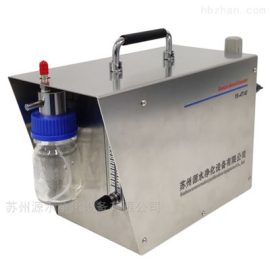
# Aerosol Generator: Principles and Applications in Modern Science
Introduction to Aerosol Generators
An aerosol generator is a device designed to produce fine particles or droplets suspended in a gas, typically air. These devices are widely used in various scientific, industrial, and medical applications. The ability to generate aerosols with precise control over particle size and concentration makes them indispensable tools in modern research and technology.
How Aerosol Generators Work
Aerosol generators operate on several principles, depending on the desired output. Common methods include nebulization, atomization, and condensation. Nebulizers, for instance, use ultrasonic vibrations or compressed air to break liquids into fine droplets. Atomizers, on the other hand, rely on high-pressure jets to create aerosols. Condensation generators produce particles by cooling a vapor until it condenses into tiny droplets.
Key Components
Most aerosol generators consist of a liquid or solid reservoir, a mechanism to disperse the material, and a delivery system. Advanced models may include features like particle size analyzers and flow controllers to ensure consistent output.
Applications of Aerosol Generators
Aerosol generators have a wide range of applications across multiple fields. In medicine, they are used for drug delivery, particularly in respiratory therapies. In environmental science, they help simulate atmospheric conditions for research. Industrial applications include coating processes and material testing.
Medical Applications
In the medical field, aerosol generators are crucial for delivering medications directly to the lungs. This method is highly effective for treating conditions like asthma and chronic obstructive pulmonary disease (COPD). The precise control over particle size ensures optimal drug absorption.
Environmental Research
Environmental scientists use aerosol generators to study air quality and climate change. By creating controlled aerosols, researchers can simulate various atmospheric conditions and study their effects on the environment.
Industrial Uses
In industry, aerosol generators are employed in processes such as spray coating and material testing. They ensure uniform application of coatings and help in the development of new materials by providing consistent test conditions.
Advantages of Modern Aerosol Generators
Modern aerosol generators offer several advantages, including high precision, reliability, and versatility. They can produce aerosols with specific particle sizes and concentrations, making them suitable for a wide range of applications. Additionally, many models are designed for ease of use and maintenance.
Conclusion
Aerosol generators are vital tools in modern science and industry. Their ability to produce controlled aerosols with precision makes them indispensable in fields ranging from medicine to environmental research. As technology advances, we can expect even more innovative applications and improvements in aerosol generator design.
Keyword: Aerosol Generator
